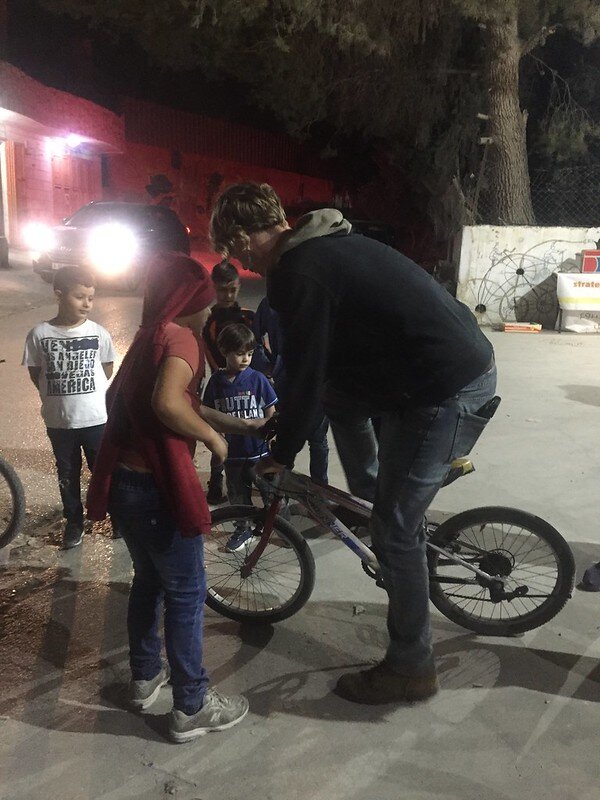Refugee Camps - Resistance and Community
We visited the Dheisheh Refugee Camp in Bethlehem. I had never visited a refugee camp before and did not know what to expect.
When we arrived we were treated to a performance by several dozen children of Dabke, a traditional Palestinian dance, at the Shoruq community center. Their energy and spirit were amazing, and it told me that this community values its next generation and is passing on its traditional culture.
In the evening we did a walking tour of the camp with our guides (three young men). There aren’t streets so much as alleys twisting around very dense multi unit housing.
As t got dark, I would have expected this to feel dangerous, as one would in large cities in the US. But it does not. There were children out and about, on bikes or not, curious about our group, smiling and giggling. There were adults too, women and men just going about their business. Several greet the guides warmly. How to account for the unexpected sense of safety?
One of our guides told us there is essentially no crime. But he doesn’t attribute this to a romanticized ideal of good Palestinians. No, they are people like others, but they live in a specific context.
There are real challenges - the housing is extremely dense (15,000 live on less than 1 square mile), water access is very limited, and they are faced with constant surveillance and pressure from the occupation.
As a result they have had to organize themselves at a grassroots level, to resist together and support one another. The camp functions more like a large extended family, where everyone knows everyone at the neighborhood level, rather than an anonymous city. If someone committed a crime where would they even go or hide?
That night 10 of us stayed at a youth center within the camp. We got a taste of their reality. Sometime during the night I hear two ‘pops’ and some barking dogs. I went back to sleep, but delegates in the other two rooms experienced a scratching in their throats and some respiratory difficulty - tear gas.
We learned at breakfast that the IDF (Israeli Defense Force) had conducted a raid into the camp not too far from us. These incursions are not unusual, averaging about one per week. No one knew why or what happened. That will only come later.
We also visited the Aida Refugee camp nearby, which is faced with many of the same housing, resource and infrastructure issues. But they are even closer to the 'Wall' and so are surrounded by six Israeli watch towers. Just yesterday, 5 youths were abducted by the IDF during a night raid - a common tactic of intimidation.
Here we also saw resilience - rooftop flowers on the Lajee community center, gardens, a playground (including a small soccer field), olives trees and lots of colorful art. A beautiful scene - spoiled only by the ever present watch tower in the background.





